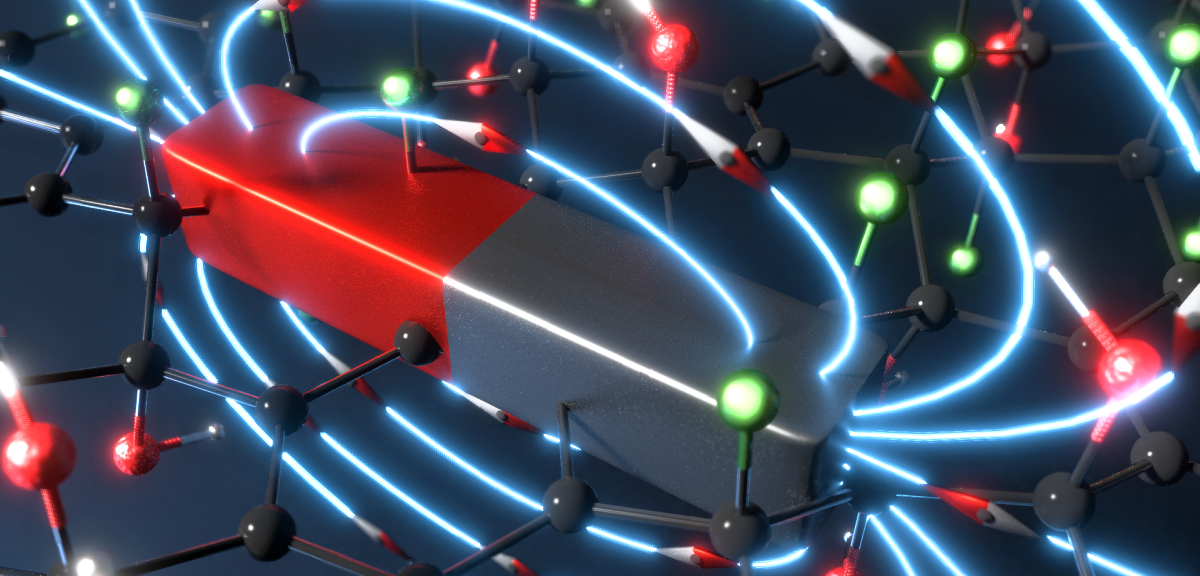Scientists report progress in the development of non-metallic magnet
RCPTM scientists together with their colleagues from Singapore discovered a new way to imprint magnetic properties in graphene. After they previously managed to create the first non-metallic magnet from graphene having modified it chemically, the researchers have now progressed to achieve magnetism in this two-dimensional material by changing its shape and size. The researchers, who had this discovery published in the prestigious journal Advanced Functional Materials, consider this achievement promising regarding potential applications in electronics and spintronics. They also suppose that such ‘magnetic graphene’ will be able to retain great electrical properties too.
Graphene is owing to its properties marked as a material of the future and its rediscovery earned Geim and Novoselov the Nobel Prize in Physics in 2010. Graphene is also a good electrical conductor. Nevertheless, it is lacking in magnetic properties, which the scientists are now trying to imprint. There are a number of theories suggesting it. One of them has been experimentally proved by scientists from Olomouc in collaboration with the team of Martin Pumera’s, who recently moved from Singapore to Prague, University of Chemistry and Technology.
“Previous theories implied that if we ‘cut’ non-magnetic graphene into fragments, we would be able to create different magnetic organizations. Our colleagues from Singapore prepared nanoplatelets of graphene and we experimentally proved a previously designed theoretical concept. We also studied the impact of other phenomena such as the size of the nanoplatelets as well as the type and the shape of its edge on the development of the ferromagnetic state,” said Michal Otyepka, one of the authors from RCPTM.

The scientists developed graphene nanoplatelets from nanotubes, which had been cut off by chemical oxidation. This strategy enables to prepare a larger quantity of the material in a chemical way, which is inevitable for real graphene applications. Microscopy images showed a variety of shapes from which the scientists had to select the right one with respect to magnetism.
“We experimentally proved that the response to the magnetic force depends on the shape of the material. The strongest response was observed with triangular-shaped nanoplatelets. Moreover, if we achieve the right geometry and shape of the edge, we will be able to increase the temperature of the transition, leading to retaining magnetism up to 107K. Such edge engineering would open doors for other applications,” said Jiří Tuček form RCPTM, a leading expert on magnetism of two-dimensional materials.
The desired goal is to retain magnetism of the material up to room temperature or even higher. The thing is that the conductivity of the material has to be preserved, which we failed to achieve in the past. “In our work we are trying to find the balance between these two phenomena. Edge engineering appears to be the most convenient strategy for imprinting magnetic properties in graphene, retaining its electrical properties. Graphene could become a promising alternative material deployed for construction of basic spintronic devices, such as spin filters or spin transistors,” said Tuček.
This work fits in the RCPTM long-term research scheme. “We are attempting to combine various methods that may lead to achieving magnetism of graphene. Our discovery proves that manipulating the size and shape of the material could be one of the ways. Previously, we demonstrated that magnetism could be achieved by changing the chemical composition of the material. We may join these two technologies on day. Therefore, it is a step up to understanding magnetism of non-metallic materials,” said Otyepka.
Tuček J., Błoński P., Malina O., Pumera M., Chua C. K., Otyepka M., Zbořil R.: Morphology-Dependent Magnetism in Nanographene: Beyond Nanoribbons, Advanced Functional Materials 2018, 28 (22), 1800592, DOI: 10.1002/adfm.201800592, IF = 12.124


